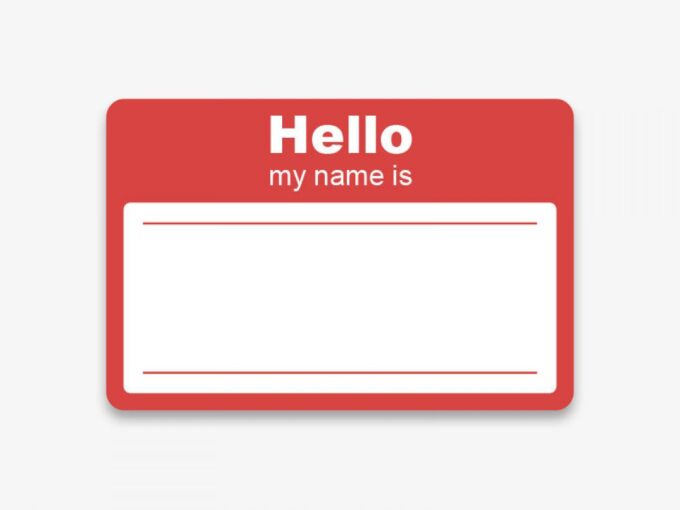Names are a powerful tool in the world of marketing. They’re not just a label; they carry weight, meaning, and can evoke emotions. Transitioning from a mere name to a recognizable brand is a journey that requires strategy, understanding, and creativity.
The Power of Names

More than just words. They have the power to shape perceptions and evoke emotions. Examples include
- A brand called “EcoFresh” might instantly convey an image of something environmentally friendly and new.
- A product called “UltraClean” might be perceived as more effective at cleaning than just “Cleaner”.
- And a product called “ComfortHome” will likely evoke feelings of warmth and safety.
Be aware that names can have different meanings in different cultures. What’s appealing in one culture might not be in another.
Pro Tip: Did you know that some of the most successful brands have names that resonate emotionally with their target audience?
Evolution to Branding
More than just a name; it’s an identity. It encompasses everything from the logo, colors, and even the tone of voice used in communications.
A brand is a unique design, sign, symbol, words, or a combination of these, employed in creating an image that identifies a product and differentiates it from its competitors.
Names are the starting point. They’re the first thing people know about you.
- For instance, reusable name tags are not just identifiers but can be a crucial part of a brand’s identity, especially in events or organizations where personalization is key.
- They can give a brand its personality. Another example features a brand called “ChillVibes”, which will be perceived as laid-back and cool.
Name Tags in Marketing
In the world of marketing, they serve as initial touchpoints. They’re the first impression, and as they say, first impressions last.
- Before a customer tries a product or service, they see the name. It’s their first interaction with the brand.
- A memorable name can stick in a customer’s mind, making them more likely to return.
- In a market saturated with similar products, a unique name can make a brand stand out.
Fun Fact: The right name can increase a product’s success rate by up to 40%!
Creating Memorable Tags

Both an art and a science. It’s about balancing simplicity with uniqueness.
- Think “Apple” or “Nike”, both simple yet memorable.
- Or “SnapChat” or “WhatsApp” describe the function while being unique.
They should be easy to pronounce and understand. Avoid names that can have multiple meanings or are hard to spell.
Across Industries
Different industries have different naming conventions and strategies. Let’s explore some successful name tag utilization across various sectors.
- Companies like “Netflix” or “Spotify” have names that are now synonymous with their industry.
- In the world of tech,”iPhone” or “Galaxy” are not just products; they’re brands in their own right.
- In the service industry, “Uber” or “Airbnb” have become verbs in daily language, showcasing their brand power.
Cultural Sensitivity and Global Appeal
In today’s globalized world, names need to resonate not just locally but globally.
Brands like “Coca-Cola” are called different things in different countries to resonate with the local audience.
It’s essential to ensure that a brand doesn’t have a negative connotation in another language. Car companies have often changed model names for different markets to avoid cultural missteps.
Name Evolution and Brand Adaptation

Brands, like all things, evolve over time. As markets shift and consumer preferences change, sometimes a brand needs to adapt to stay relevant.
There are moments when a refresh or complete overhaul is necessary. This could be due to a change in company direction, a need to target a new demographic, or to shake off old negative associations.
It’s not just about a change; it’s about evolving the entire identity. This might involve a new logo, color scheme, or even a change in company values and mission.
While it’s essential to bring something new to the table during a rebrand, it’s equally crucial to retain elements that loyal customers recognize and love.
Pro Tip: Rebranding is a delicate process. It’s about finding the perfect balance between the old and the new.
Digital Era
The digital age has transformed the way we think about names. Now, they’re not just about physical products but also about online presence.
Your website’s domain is often the first touchpoint for online customers. It needs to be memorable, relevant, and easy to type.
In the age of social media, your handle or username becomes a significant part of your identity. It should align with your brand and be consistent across platforms.
In the online world, being discoverable is key. Ensuring your brand or website is optimized for search engines can make a significant difference in online visibility.
Fun Fact: The first domain name ever registered was Symbolics.com, way back in 1985!
Legal and Trademark Implications
With the power of names comes the responsibility of ensuring they’re legally protected.
Trademarking your brand name protects it from unauthorized use and ensures you have exclusive rights to it in your industry.
Different countries have different trademark laws. It’s essential to be aware of these when expanding internationally.
Famous cases, like Apple Inc. vs. Apple Corps, highlight the importance of trademark protection and the complexities of branding disputes.
Consistency and Integration
A brand’s strength lies in its consistency. Every touchpoint, from tags to marketing campaigns, should resonate with your core identity.
Whether it’s a product or a company tagline, it should be in harmony with the core message and values. Names should be prominently featured in marketing campaigns, ensuring they’re front and center in the consumer’s mind.
Consistent branding builds trust. When consumers see the same name, logo, and colors across different platforms, it reinforces recognition and loyalty.
Measuring Name Tag Success

How do you know if your strategy is working? By measuring its success.
- Tools like brand awareness surveys can help gauge how recognizable your brand is among your target audience.
- A successful strategy should translate to growth, be it in sales, customer loyalty, or market share.
- Direct feedback from customers can provide invaluable insights into how effective your name tags and overall branding strategy are.
Future Trend
The world of marketing is ever-evolving. Staying ahead of the curve means anticipating future trends.
- With advancements in AI, we can expect more personalized experiences, tailored to individual consumer preferences.
- Companies might start using AR and VR for interactive name tags, immersing the consumer in the brand world.
- As cultures evolve and globalize, the way consumers perceive names will change. Brands need to be agile and ready to adapt.
Conclusion
Names are powerful. They’re the foundation upon which brands are built. In the world of marketing, understanding the significance of names, leveraging them effectively, and ensuring they resonate with the target audience can be the difference between a brand’s success and obscurity.
Embrace the art and science of name-based marketing, and watch your brand soar.









